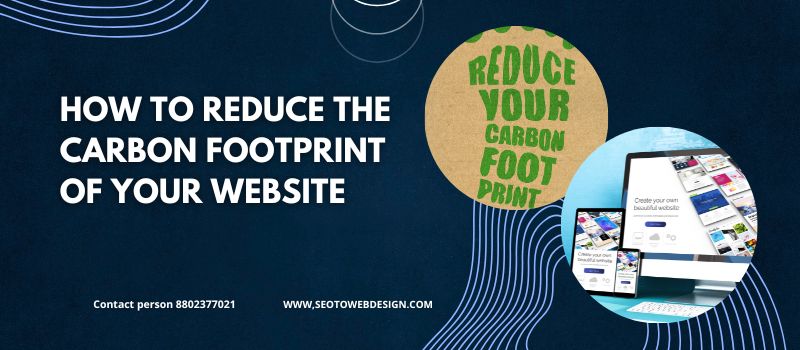1. Choose An Eco-Friendly Web Hosting Service
The first step in reducing the carbon footprint of your website is choosing an eco-friendly web hosting provider. Traditional hosting services rely on data centers powered by fossil fuels, which contribute to high levels of carbon emissions. In contrast, green hosting providers use renewable energy sources, like wind or solar power, to offset or reduce their carbon output.
How To Choose The Right Host
- Look for hosting providers that are certified as using 100% renewable energy.
- Check for carbon offset programs or certifications like Green Power Partner.
- Opt for data centers that are energy-efficient and built with sustainability in mind.
Switching to a green hosting service can significantly reduce the environmental impact of your website.
2. Optimize Images And Media Files
Large media files are one of the biggest contributors to a website’s carbon footprint. Images, videos, and other media assets require more bandwidth to load, leading to higher energy consumption from both the server and the user’s device. By optimizing these files, you can improve page load speed and reduce energy use.
Optimization Techniques
- Compress images and use modern formats like WebP for smaller file sizes.
- Lazy load images and videos so they only load when the user scrolls to them.
- Reduce the number of unnecessary videos and use compressed, lower-resolution formats when possible.
Optimized media files reduce the amount of data transferred, lowering energy usage and improving user experience.
3. Enable Caching And Use Content Delivery Networks (CDNs)
Another effective way to reduce your website’s carbon footprint is to enable caching and use Content Delivery Networks (CDNs). These tools reduce the amount of data that needs to be reloaded when a user visits your site, minimizing the amount of energy required for each visit.
How They Work
- Caching: Stores static versions of your website’s pages, meaning users don’t need to reload the entire site each time they visit. This reduces the workload on servers and decreases energy consumption.
- CDNs: Distribute your website’s content across multiple servers worldwide, allowing users to load the site from a server closer to their location, which reduces data transfer distance and energy use.
Both caching and CDNs enhance performance while lowering the environmental impact of serving your website content.
4. Reduce Unnecessary Plugins And Scripts
Many websites rely on multiple plugins and scripts for added functionality. However, not all of these are necessary, and some can significantly increase your site’s load time and resource usage. Each additional plugin or script increases the energy required to load your website, contributing to its carbon footprint.
Steps To Minimize Plugin Use
- Audit your current plugins and scripts to identify those that are outdated or unnecessary.
- Remove or replace inefficient plugins with lightweight alternatives.
- Avoid excessive use of third-party scripts, especially if they are resource-heavy.
Streamlining your website’s functionality can make it faster and more energy-efficient.
5. Adopt Minimalist Design And Code
Minimalist web design not only creates a better user experience but also reduces energy consumption. Websites with simpler layouts and fewer elements load faster and require less energy from both the server and the end-user device.
How To Simplify Design
- Use clean, minimal design with fewer elements on each page.
- Write clean, efficient code that reduces unnecessary processes and server requests.
- Avoid heavy use of animations and interactive features unless absolutely necessary.
A well-optimized, minimal website reduces data transfer and processing time, significantly lowering energy consumption.
6. Conduct Regular Website Audits
Regular website audits are essential for maintaining a sustainable website. These audits help you identify areas where your site may be consuming more energy than necessary, whether it’s through inefficient hosting, large media files, or excessive plugins.
Tools For Website Audits
- Use Google’s PageSpeed Insights to monitor your website’s performance.
- Run sustainability audits using tools like Website Carbon Calculator to evaluate your site’s carbon footprint.
- Regularly review your hosting service, plugins, and code to ensure optimal efficiency.
By conducting routine audits, you can ensure your website remains eco-friendly and energy-efficient.
7. Encourage Sustainable User Behavior
Your users can also play a role in reducing your website’s carbon footprint. Encouraging users to adopt sustainable online habits can minimize the amount of energy consumed when they visit your site.
Ways To Encourage Users
- Promote the use of energy-efficient devices like smartphones or laptops.
- Provide options for users to download files rather than streaming large videos or media files. .
- Use dark mode features, which can reduce the amount of energy required by some screens.
Simple behavior changes can collectively reduce the environmental impact of your website.

